What is a coalescer separator filter/natural gas filter element?
Preface
As we enter a new generation of energy revolution, the processing and purification of natural gas and various liquids have become crucial. Among them, centrifugal separation filter element and natural gas filter element play a key role. The goal of this article is to study and deeply analyze the properties, working principles and effects of this type of filter element in various applications.
Centrifugal separation filters and natural gas filters are widely used in industrial fields, such as oil and gas refining, chemical production, environmental protection and many other important fields. However, the understanding and research on these devices often only remain on the surface. This article aims to fill this gap and explore and understand their deeper functions.
By conducting in-depth research on the operating mechanisms of centrifugal separation filters and natural gas filters and analyzing their effectiveness in actual operations, we hope to provide more scientific and effective theoretical support for industrial production. At the same time, we also expect that the research results of this article can provide a basis for future research and provide new ideas and directions for improving and optimizing these key equipment.
This article is pragmatically oriented and strives to provide the most systematic and comprehensive research content. We hope to take this opportunity to promote scientific development based on more in-depth and detailed research and make greater contributions to our society and environment.
We also hope that readers can get inspiratio
n from it, stimulate new thinking, and jointly promote our scientific research field to move forward.

The development and evolution of coalescing separation filter element/natural gas filter element:
The development process of coalescing and separation filter elements is relatively complex and involves technological innovation and optimization in many aspects.
Primary stage: Early coalescing separation filters basically relied on physical filtration to separate particles, which was inefficient and unable to handle small particles and liquids.
Advanced stage: With the advent of coalescing materials and the use of multiple layers of filter media, filters begin to be able to handle fine particles and liquids. In addition, the filter element is used in oil water removal systems to filter out solid impurities and coalesce tiny water droplets into large water droplets. Most of the water droplets can settle by their own gravity.
Current level: With the development of science and technology, the material and structure of the coalescing and separation filter elements have been further optimized to adapt to different application needs. It is widely used in oil-water separation systems and can effectively handle oil-water mixtures, suspensions, emulsions, etc.
Overall, the development of coalescing separation filters is an important milestone for separation technology. Whether in the fields of petrochemical industry, food processing or water treatment, it has shown its irreplaceable value. However, the development of technology will not stop. With the emergence of new materials, new technologies and new needs, we can expect more innovations and applications of coalescing and separation filters in the future.
Natural gas filter elements have generally gone through the following stages:
Origin stage: Natural gas filter elements were initially mainly used to reduce dust and other pollutants in natural gas and prevent valves, metering equipment, etc. from being worn. The design and materials of the initial natural gas filter elements were not ideal and could not meet the industry's demand for large-scale gas-liquid separation.
Development stage: With the development of technology and the increasing requirements for natural gas cleanliness, the material and design of natural gas filter elements have been improved. For example, a filter element with a multi-layer composite structure can achieve high-precision filtration. Chinese patent CN102151450B discloses such a filter element. The outer layer is made of stainless steel dense mesh, which serves as the first layer of surface filtration and can resist erosion; the middle non-woven protective layer provides deep filtration.
Current level: At present, the design and materials of natural gas filter elements are quite mature and can cope with various interferences and harsh working environments. These filter elements have become the core part of gas purification equipment, playing an important role in industries such as oil, natural gas, and chemical industries.
In summary, from the initial extensive filtration to the current high-efficiency and high-precision filtration, the development of natural gas filter elements is a process of continuous optimization and innovation. In the future, with the development of new materials and new processes, we can expect that the performance and application fields of natural gas filter elements will be further expanded.
What is the application of coalescing filter?
Coalescing separation filter elements have a wide range of applications in many industries, as described below:
Petrochemical industry: Coalescence and separation filter elements are mainly used for the purification and filtration of oil and gas in this industry, and their use frequency is high. The specific life span depends on the specific material and usage conditions of the filter element, but it can generally last several years.
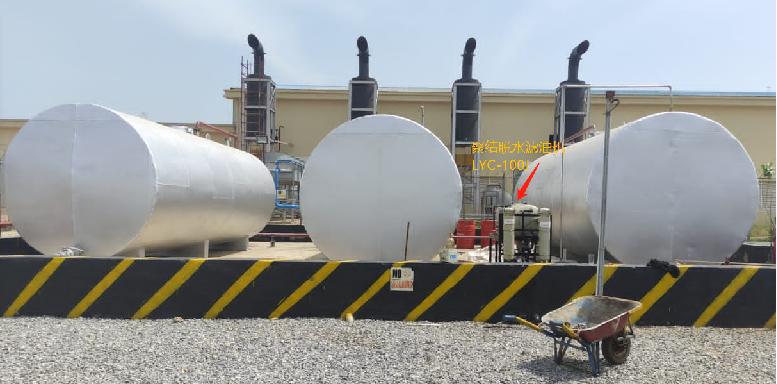
In fuel production: coalescing separation filter elements are mainly used for the separation and filtration of aviation fuel, gasoline, kerosene, and diesel. Because it can effectively separate water and oil, fuel efficiency is greatly improved. Its usage and service life also depend on specific usage conditions.
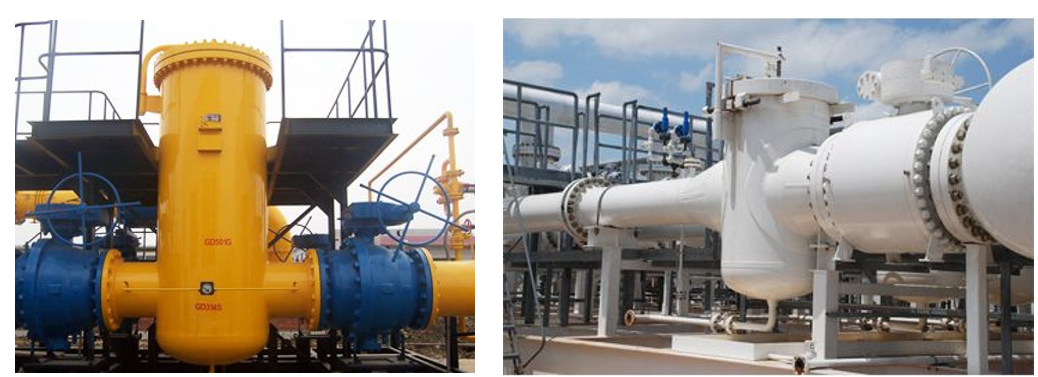
Power Industry: In power plants, coalescing separation filters are often used to treat and recycle fuel. The specific service life will vary depending on the quality and usage conditions of the filter element.
Aviation Fuel Industry:
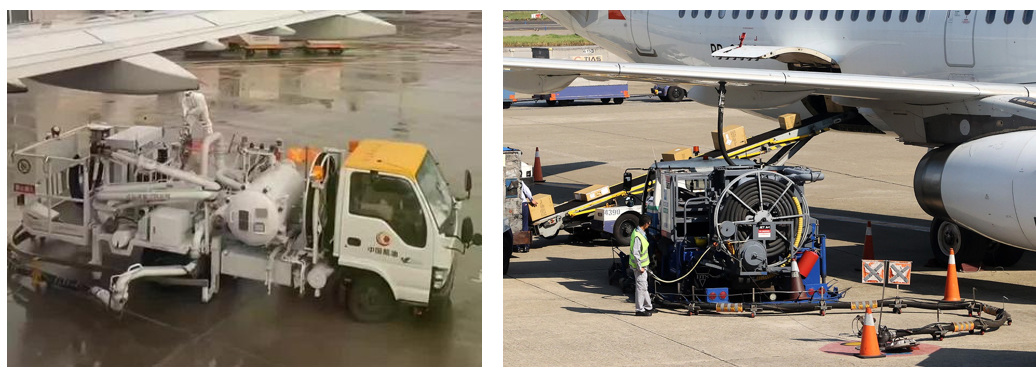
As with all industries, the usage and service life of coalescing separation filter elements will vary based on a variety of practical conditions, including operating conditions, filter element quality and other environmental factors. No matter which industry you are in, regular inspection and replacement of filter elements are very necessary to ensure the effectiveness and performance of the filter elements.
What is the application of natural gas filter?
The applications of natural gas filter elements in different industries are as follows:
Petrochemical industry: Natural gas filter elements are used in the petrochemical industry to filter and purify oil and natural gas. They have the advantages of good air permeability, low resistance, large filter area, large dirt holding capacity, and long service life.
Chemical industry: In the fields of chemical industry, metallurgy, electronics and pharmaceuticals, natural gas filter elements can be used to filter various chemical products and waste according to the use environment and the quality of the filter element, alleviate equipment damage problems and improve product production efficiency.
Textile industry: In the textile industry, natural gas filter elements can be used to purify and filter natural gas, thereby improving efficiency and safety in the production process.
Aerospace industry: In the aerospace industry, natural gas filter elements are used to filter and purify fuel and lubricating oil. They often have a long service life, and their service life can reach about two years.
City gas industry: In the city gas industry, natural gas filters provide clear and safe gas supply. Natural gas filters are widely used in this field.
Please note that the usage and service life in the above industries are estimates based on general conditions. The actual situation may vary due to various factors such as the specific use environment, operating conditions, and filter element quality. But in general, natural gas filters play an important role in many industries.
Coalescence separation filter element/natural gas filter element composition:
As important filters, coalescing separation filter elements and natural gas filter elements play an important role in various fields. The following introduces you to their various components.
Coalescing separation filter element:
Demulsification layer: Filters trace amounts of moisture in the fuel and breaks small droplets into extremely small droplets.
Inner coalescing layer: The very small droplets formed in the demulsification layer are aggregated into larger droplets.
Outer coalescing layer: The larger droplets formed in the inner coalescing layer gather together and form larger water droplets.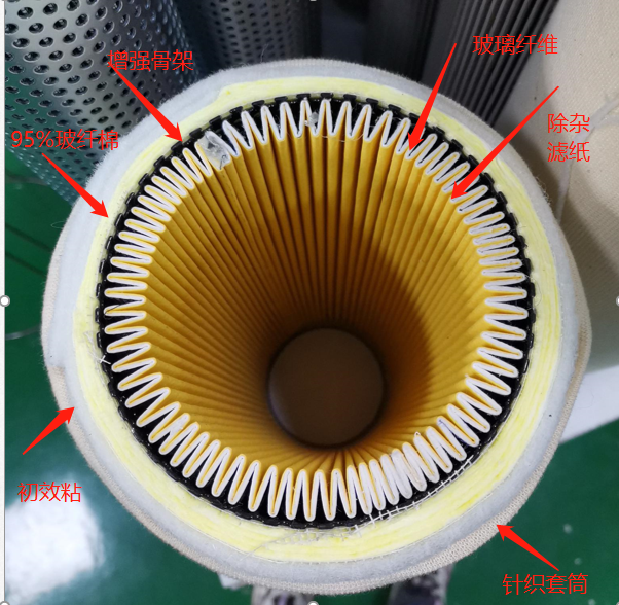

Natural gas filter element:
Metal shell: provides structural support for the entire filter, can resist high pressure, and protects the internal filter element from damage.
Mixed adsorption material: With covering film, it can absorb moisture and make natural gas drier.
Isolation net: prevents large particles of impurities from passing through, thereby achieving filtration of natural gas.
During the selection and use of filter elements, attention should be paid to selecting the appropriate filter element based on the actual application environment, including pressure, temperature, flow and other conditions, and performing regular maintenance and replacement to ensure the effectiveness of the filter element and the normal operation of the equipment.
Production process of coalescing separation filter element/natural gas filter element
The production of coalescing separation filter elements and natural gas filter elements requires following a rigorous process and adopting a series of quality control methods to ensure that every consumer is provided with qualified products.
Selecting and processing materials: In the initial stage, the process starts with selecting the materials required for the filter element, such as coalescing filter media, metal shells, mixed adsorption materials, etc. These materials need to undergo oleophobic and hydrophobic treatment, anti-corrosion treatment and other steps to ensure their subsequent filtration performance.
Manufacturing filter elements: The processed materials are made into filter elements with certain specifications through special equipment and technology. This process usually requires strict process regulations and operations to ensure that the structure and performance of the filter element meet the design requirements.
Quality testing: During the filter element manufacturing process, quality tests will be conducted regularly, such as the filter element's filtration efficiency, impurity capture, pressure resistance, etc., so that problems can be discovered and solved in a timely manner.
Packaging and transportation: Filter elements that pass the test will be cleaned, packaged, and stored and transported in an appropriate manner to prevent contamination of the filter element or damage to its structure during the process.
In order to ensure that each filter element meets the standards, samples of each batch of filter elements produced are taken for testing to detect the structural integrity, size, sealing, filtration precision and welding quality of the filter element to ensure that the product meets the specified standards. At the same time, the quality control department will regularly audit and evaluate the production process to ensure that the production process of filter elements can be continuously improved to achieve the goal of providing high-quality filter elements.
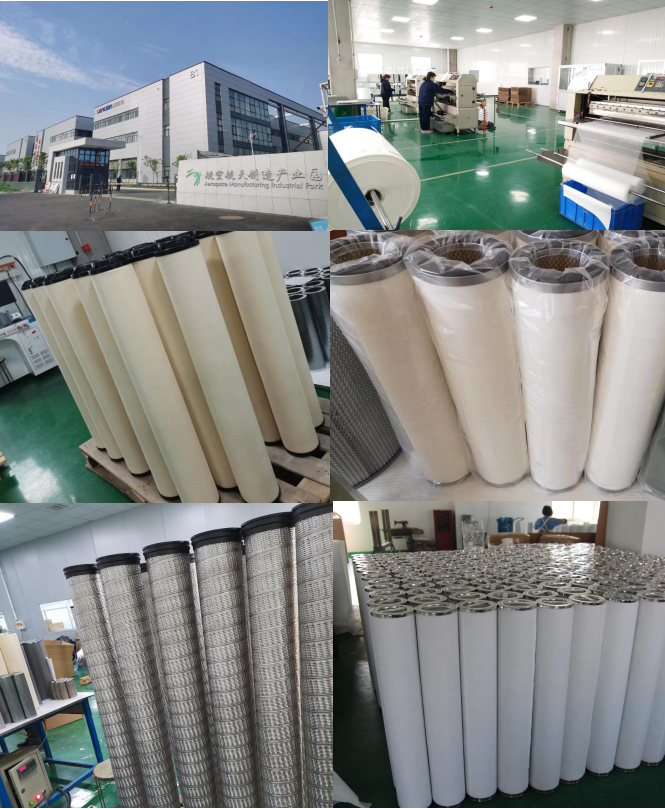
Replacement procedures
Based on experience, the following are common steps for coalescing separation filter elements and natural gas filter element replacement:
Coalescence separation filter element replacement steps:
Shutdown: Shut down the device and ensure all activity on the device stops.
Disconnect the pipeline: Close the ball valve of the inlet pipe, and open the ball valve under the water storage tank, the emptying ball valve, and the ball valve leading to the oil drain pipe until the liquid is drained.
Open the filter can: Use the appropriate tool to open the cover of the filter can.
Take out the old filter element: Carefully take out the old filter element to prevent the filter element from breaking and contamination on the other hand.
Install the new filter element: Install the new filter element correctly according to the requirements in the instruction manual.
Reassembly: Re-seal the filter element tank cover and restore the pipeline connections.
Inspection: After turning on the machine, pay attention to whether the equipment is running normally and whether there are leaks or other problems.
Natural gas filter element replacement steps:
Close the valve: Close the natural gas switching valve to ensure process safety.
Discharge waste: Open the exhaust hole and discharge the waste in the pipeline.
Open the filter housing: After the dirt has been drained, open the filter housing.
Remove the old filter element: Remove the old filter element safely to avoid damage or long-term contact.
Install the new filter element: Place the new filter element into the filter housing and confirm that it is in the correct position.
Re-sealing: Apply an appropriate amount of lubricant to the filter housing, then seal the filter housing.
Inspection: Fix the filter element and inspect it for leaks, omissions, etc.
Turn on natural gas: Confirm that all steps have been completed and you can turn on the natural gas valve.
These steps are for reference only, as specific replacement steps may vary depending on the type and model of device. Therefore, when replacing the filter element, you should refer to the device's user manual or consult the device manufacturer.
How to choose the coalescing separation filter element and a natural gas filter element?
When selecting a coalescing separation filter element and a natural gas filter element, you need to consider the following points:
Choose a coalescing separation filter element:
According to the filtration goal: You need to clarify the particle size that the filter element needs to filter to determine the filter element pore size and filtration accuracy you need.
Look at the material of the filter element: The material of the filter element has a greater impact on the filtration effect. You need to choose a filter element material that can maintain stable performance in the working environment. For example, choose a filter element that is resistant to temperature or corrosion and has good coalescing properties.
Consider the matching of the equipment: the filter element needs to match the interface of the equipment before it can be used, otherwise it will affect its filtration effect and may even cause damage to the equipment.
Choose a natural gas filter element:
Consider working pressure: The allowable working pressure of natural gas filter elements with different structural forms is different, so when selecting, you need to consider the allowable working pressure of the equipment.
Material: When selecting a natural gas filter element, the material of the filter element also needs to be considered. Be sure to choose a filter element that can work stably in natural gas for a long time.
Filtration precision: Choose the appropriate filtration precision according to the filtration requirements. Generally, the higher the filtration precision of the natural gas filter element, the better the filtration effect.
The above selection methods are for reference only. In practice, you may need to further clarify the selection of filter elements based on your specific application. At the same time, you can consult the seller or manufacturer of the filter element. They can usually provide specialized advice to help you choose the most suitable filter element.
Coalescence separation filter element/natural gas filter element model
CC3LG02H13 | CC3LGA7H13 | LSS2F2H | LCS2B1AH | LCS4H1AH |
CS604LGH13 | CC3LGB7H13 | LCS2H1AH | CC3LGO2H13 | LCS4B1AH |
CS604LGBH13 | LSS2F1A | LCS2HHH | LCS4HHH | LCS2BAH |
LCS4BAH | LSS2FH |
|
|
|
FG-12 | FG-24 | FG-36 | FG-72 | FG-312 |
FG-324 | FG-336 | FG-372 | FG-536 | FG-572 |
FGX-312 | FGX-324 | FGX-336 | FGX-372 | FGX-536 |
PCHG-12 | PCHG-24 | PCHG-36 | PCHG-72 | PCHG-312 |
PCHG-324 | PCHG-336 | PCHG-372 | PCHG-536 |
|
JB 1874-O-KM | JB 3245-O-KM | JB 336 C-AC |
|
|
JPM 336-5 | JPM 4340-10AE-X | JPM 618-10-W | JPM 6781-5 | JPMC4640-10A-NCN |
JPMG 2709-W | JPMG 2719-W | JPMG 30226-0.7 | JPMG2530-10AVDHT | JPMG30226-D-V |
JPMG30226-D-VS | JPMG 324R-CE | JPMG-336 | JPMG 336-R | JPMG 336CE-R |
JPMG-36346C-V | JPMG-36346C-10-V | JPMG536-CE-RRT | JPMG640-V | JPMK 30226-5-D-R |
JPMK 30226-5R | JPMK 340-20A-D | JPMP2540-25-AB-O | JPMP-36344C-E | JPMG536-CE-RRT |
JVF-1122C | JVF 1120-C | JRF 720-C | JVF636-610 | JCP 664-OI |
JFG 318-5 | JFG 336 | JFG 336-5 | JFG 336-5-R | JFG 36-R |
JFG 372-UF |
|
|
|
|

















